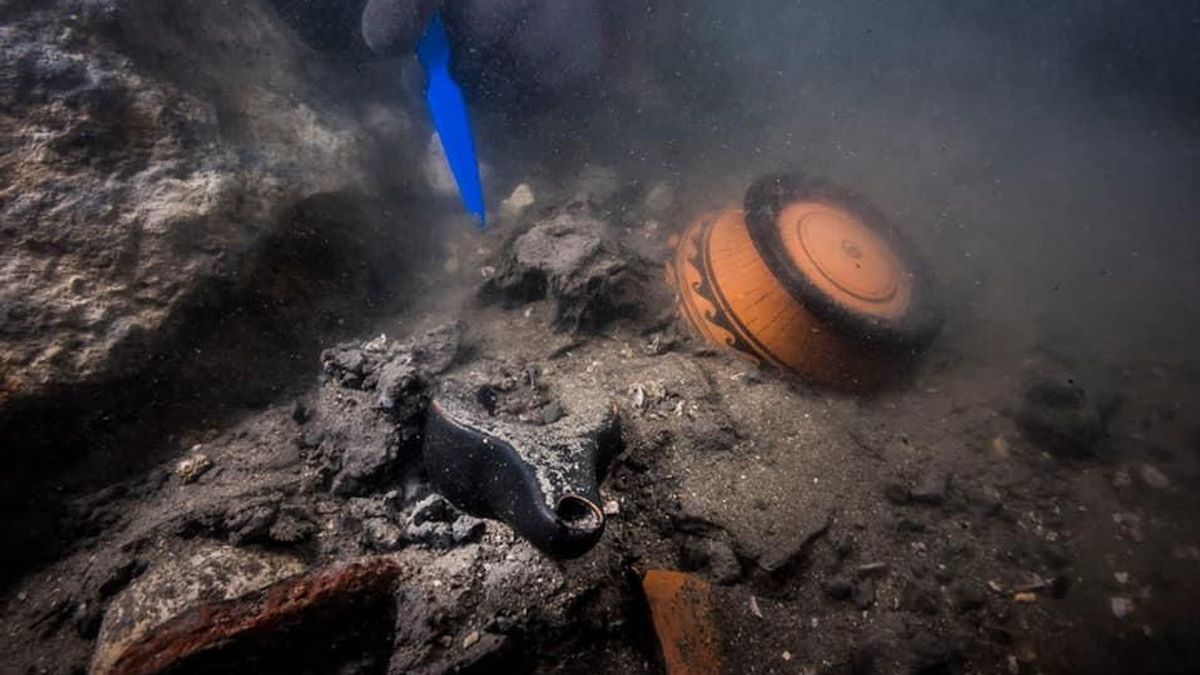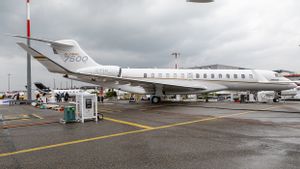JAKARTA - A joint research team from France and Egypt has found the remains of a rare military ship in Thonis-Heracleion, an ancient city that was once the largest Egyptian port in the Mediterranean.
Along with this discovery, the researchers also managed to find a burial complex that describes the existence of Greek traders at that time, Egyptian authorities said Monday, July 19, quoted by Reuters.
The city, which controlled the entrance to Egypt at the mouth of the western branch of the Nile, dominated the area for centuries before the founding of nearby Alexandria by Alexander the Great in 331 BC.
Crushed and submerged along with a large area of the Nile delta by several earthquakes and tidal waves, Thônis-Heracleion was rediscovered in 2001 in the bay of Abu Qir near Alexandria, now Egypt's second-largest city.
The military ship, discovered by an Egyptian-French mission led by the European Institute for Underwater Archeology (IEASM), sank when the famous temple of Amun moored next to it collapsed in the second century BC.
"An initial study shows the hull with a flat bottom of 25 meters, with oars and large sails, was built in the classical tradition and also features Ancient Egyptian construction", said the Egyptian Ministry of Tourism and Antiquities.
Elsewhere in the city, the mission revealed the remains of a large Greek burial ground dating to the first years of the 4th century BC, the ministry said.
"This find beautifully illustrates the existence of Greek merchants living in the city", the ministry said, adding that Greeks were allowed to settle there during the end of the Pharaonic dynasty.

"They built their own holy places near the great temple of Amun. The temples were demolished, simultaneously and their remains were found mixed with Egyptian temples", the ministry said.
Meanwhile, citing the Egyptindependent, the military ship allegedly sank while moving large blocks of the famous Amun temple, and was on its way to be moored in the canal that runs along the south side of the temple when the disaster struck.
According to the head of the Egyptian Antiquities Sector at the Egyptian Ministry of Tourism and Antiquities, Ayman Ashmawy, the ship was found nearly five meters beneath hard clay that had mixed with the rubble of a collapsed temple.
Meanwhile, French underwater archaeologist Franck Goddio called the discovery an extremely rare event, with the only other find at this level being the Punic Ship Marsala dated 235 BC. Archaeological finds of this type of Hellenistic ship were completely unknown prior to this discovery.
Head of the Department of Underwater Antiquities Center Ehab Fahmy said the preliminary study showed that the ship's hull followed the classical tradition, relying on long mortise and tenon joints and a well-developed internal structure, it also exhibited the features of Ancient Egyptian construction methods and was therefore built through this method.
The ship is a kind of rowing ship with a large sail, as evidenced by the mast which is quite large in size. In addition, this ship was flat-bottomed and had a flat keel, quite favorable for navigation on the Nile and in the Delta.
Some of the hallmarks of Ancient Egyptian shipbuilding, along with evidence of the reuse of wood, suggest that the ship was built in Egypt. At over 25 meters long, the ratio of length to width is close to six to one.
To note, the ancient City of Thônis-Heracleion was for centuries Egypt's largest port on the Mediterranean Sea before the founding of Alexandria by Alexander the Great in 331 BC.
SEE ALSO:
Several earthquakes were followed by tidal waves that triggered the liquefaction of land that carried 110 square kilometers of the Nile delta section, including the cities of Thônis-Heracleion and Canopus, which collapsed under the sea.
The two cities were rediscovered by the IEASM in collaboration with the Department of Underwater Archeology of the Ministry of Tourism and Antiquities, in 2001 and 1999, respectively.
The English, Chinese, Japanese, Arabic, and French versions are automatically generated by the AI. So there may still be inaccuracies in translating, please always see Indonesian as our main language. (system supported by DigitalSiber.id)


















